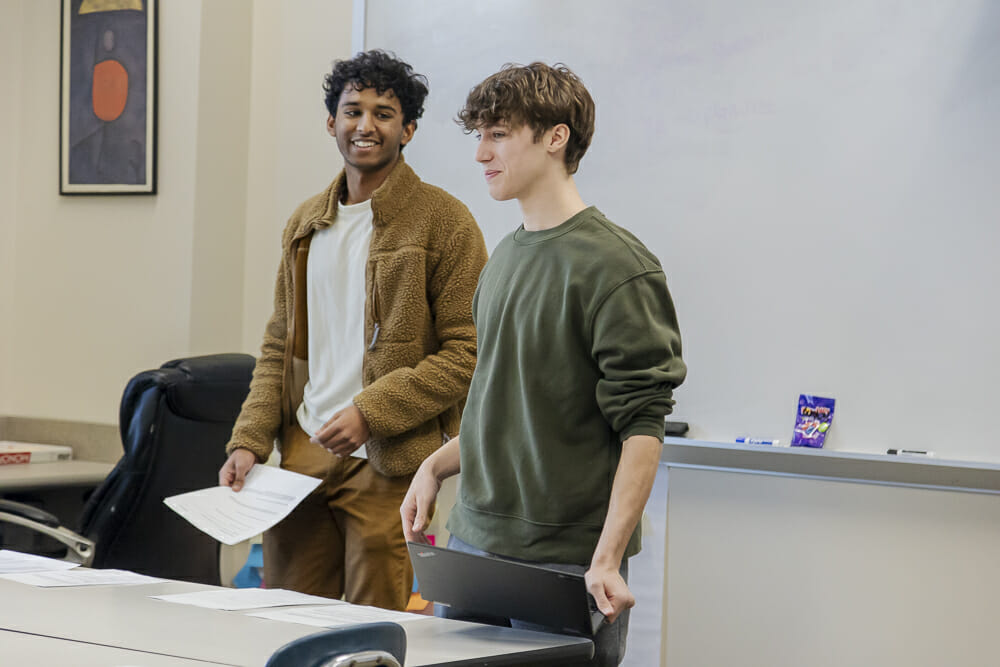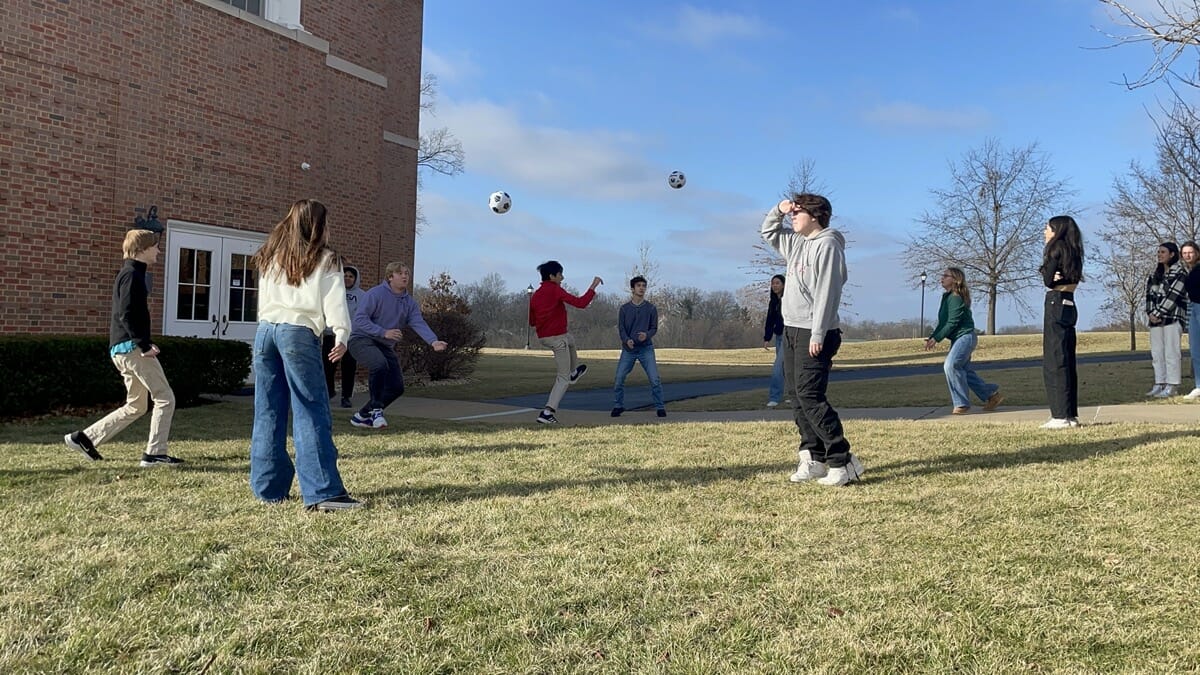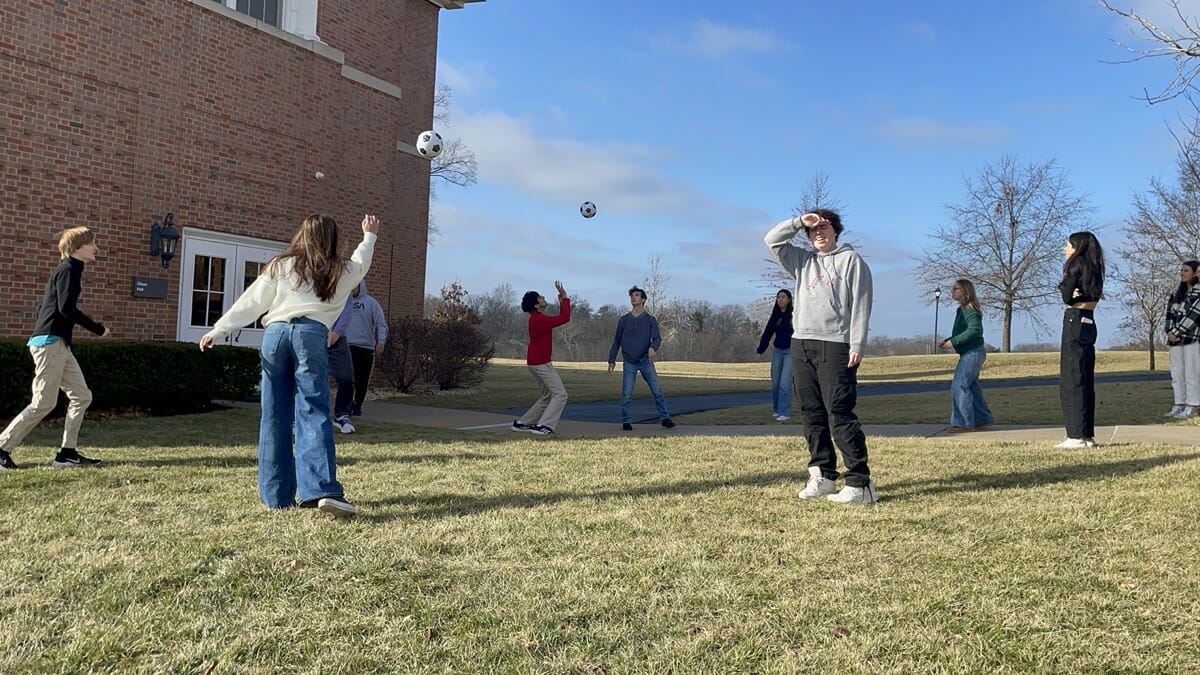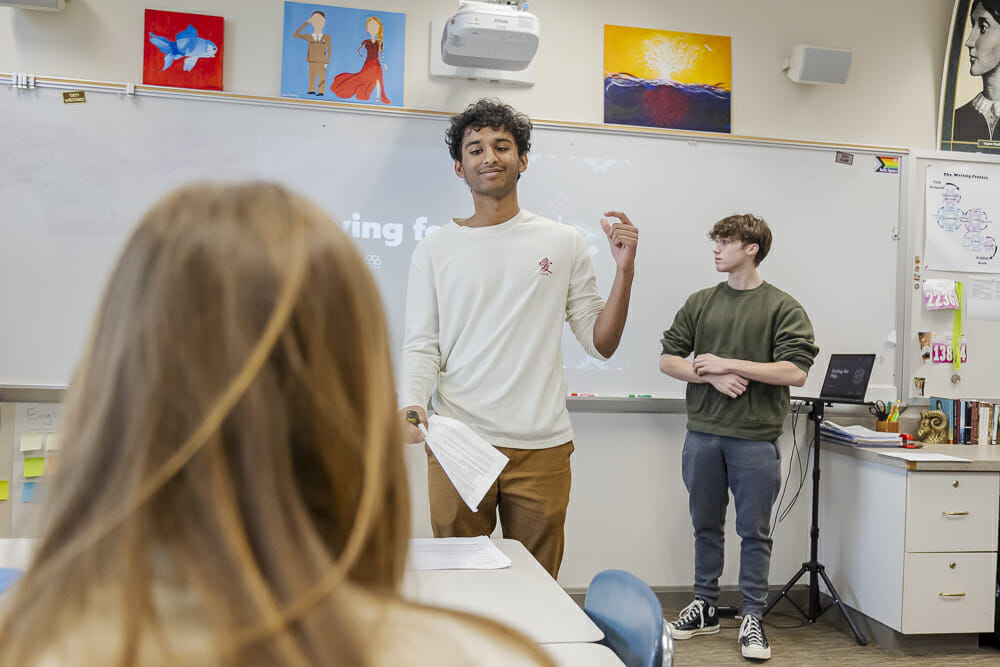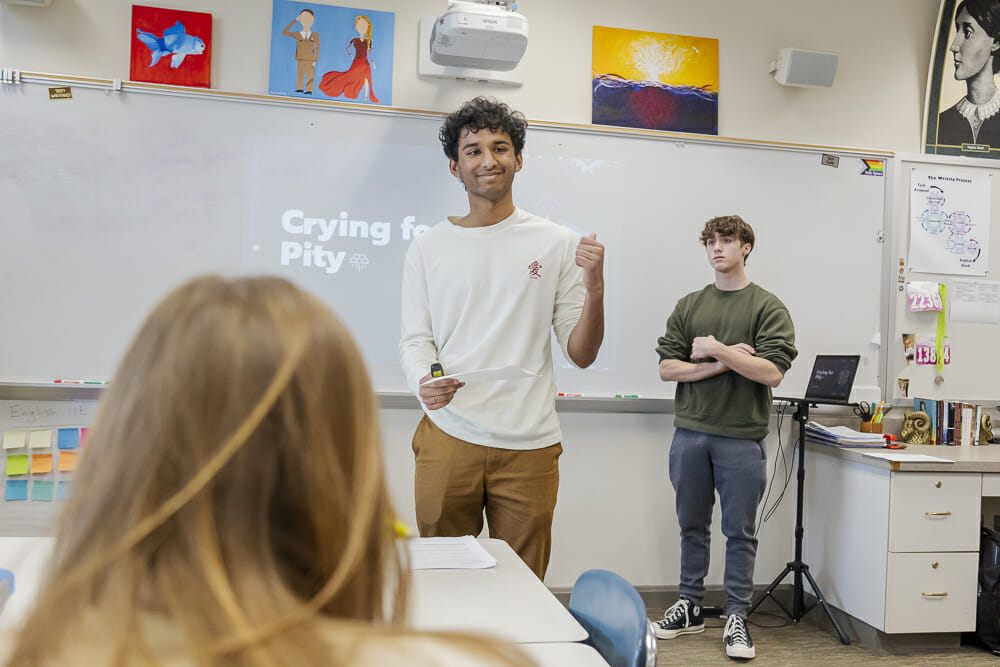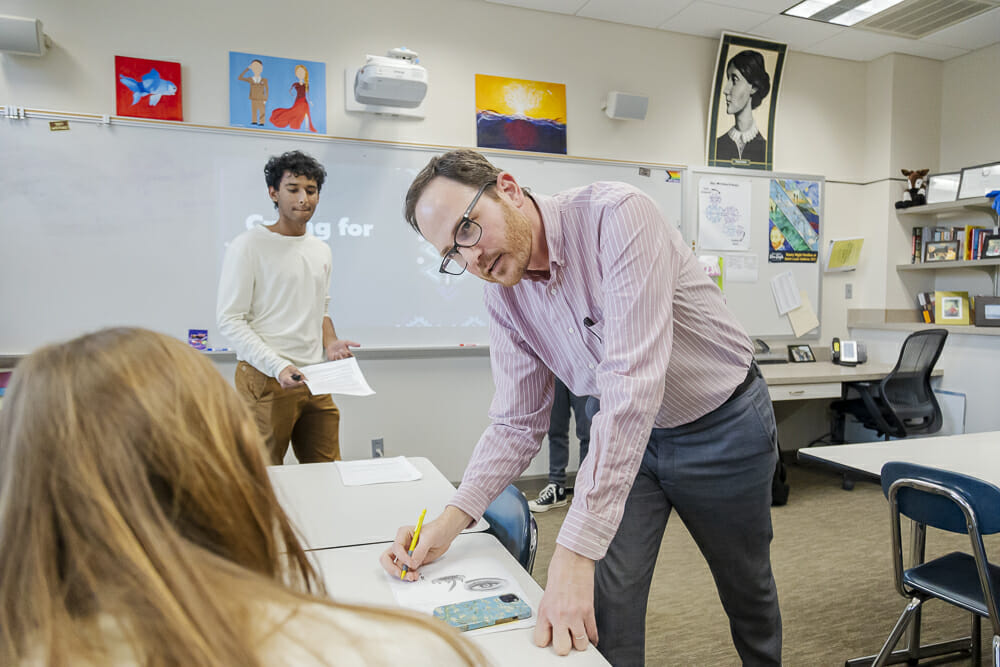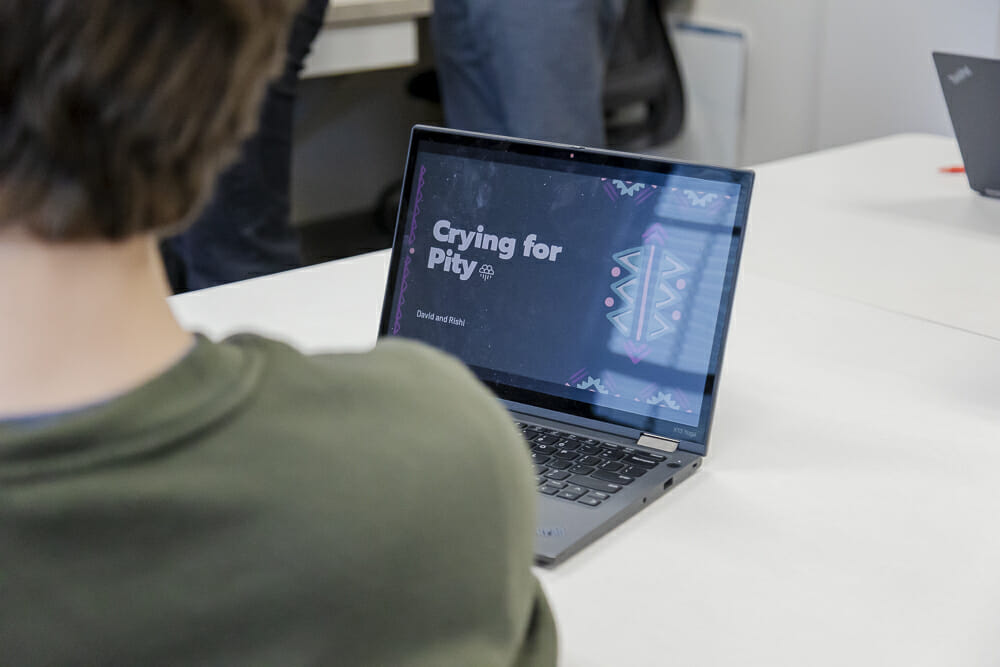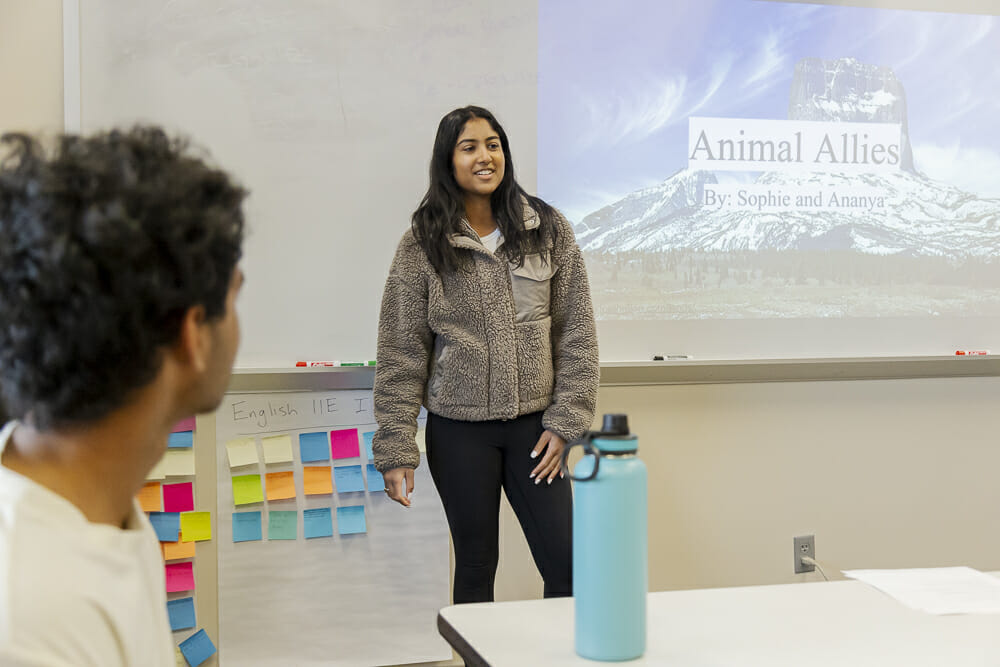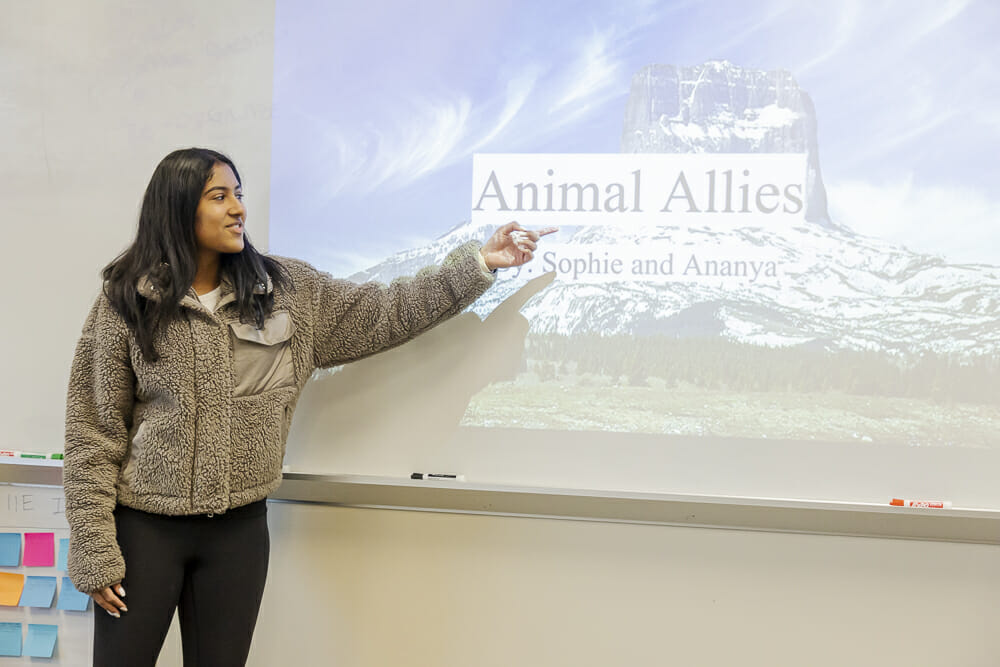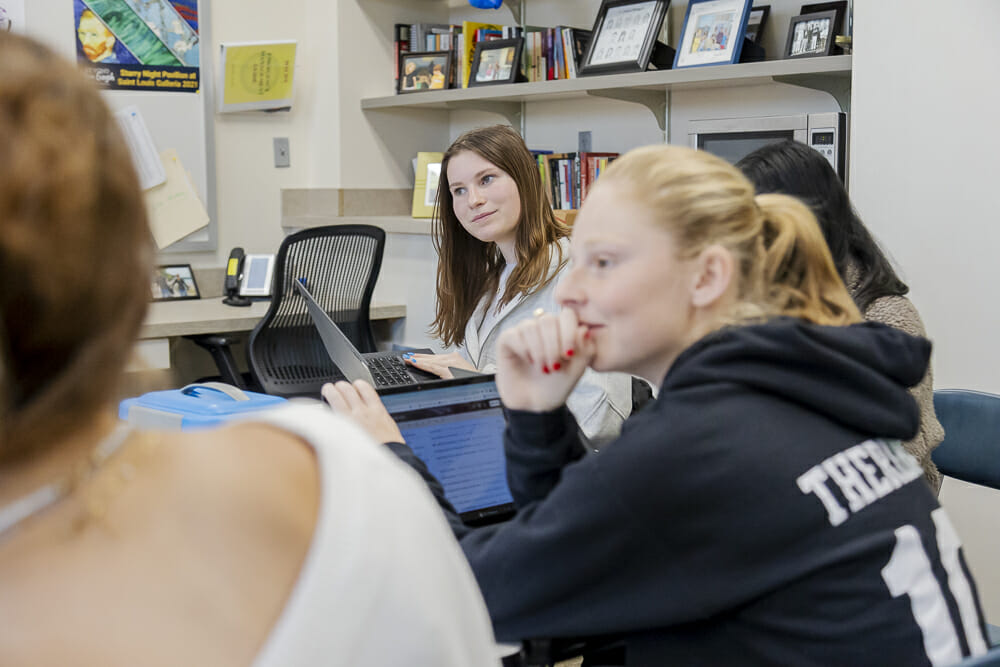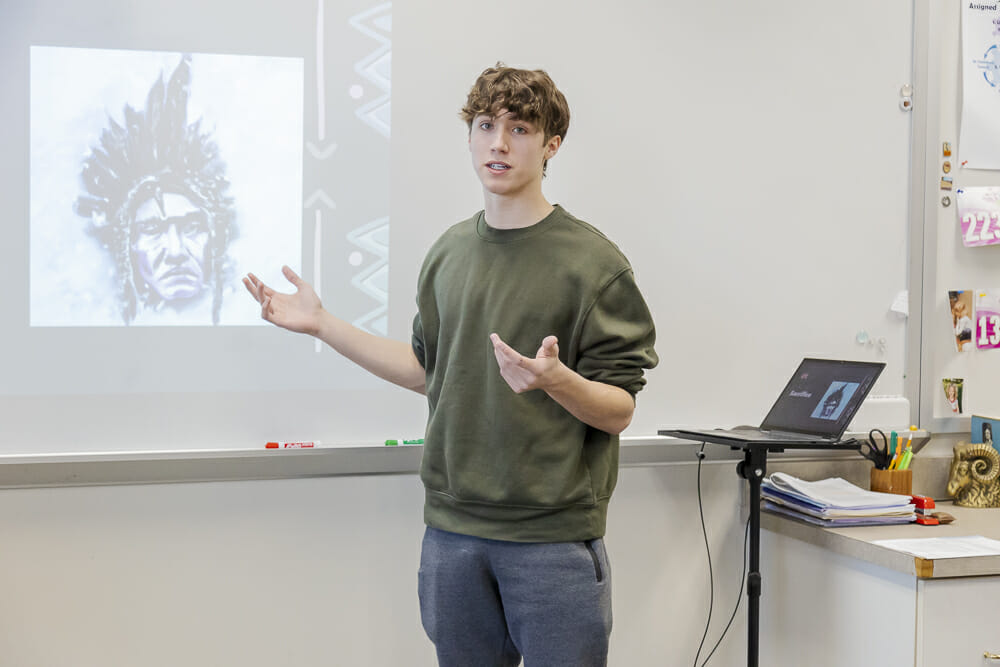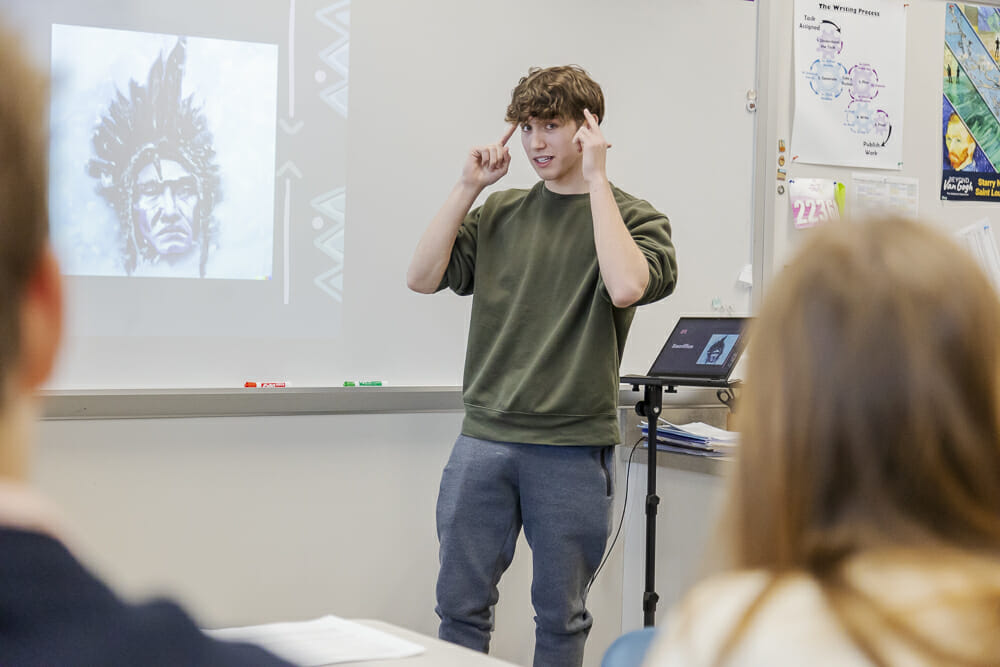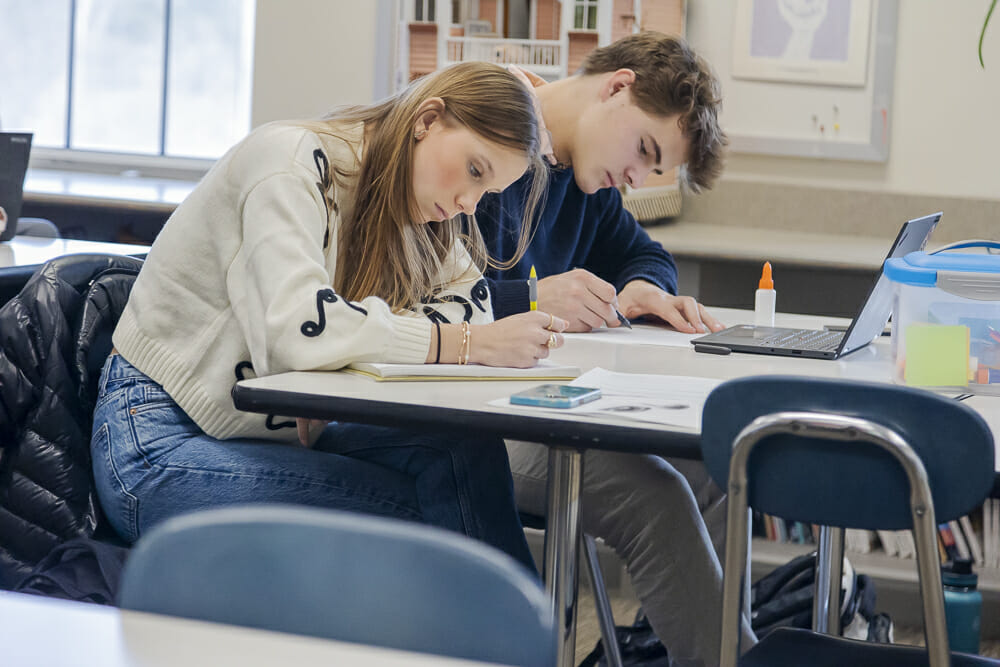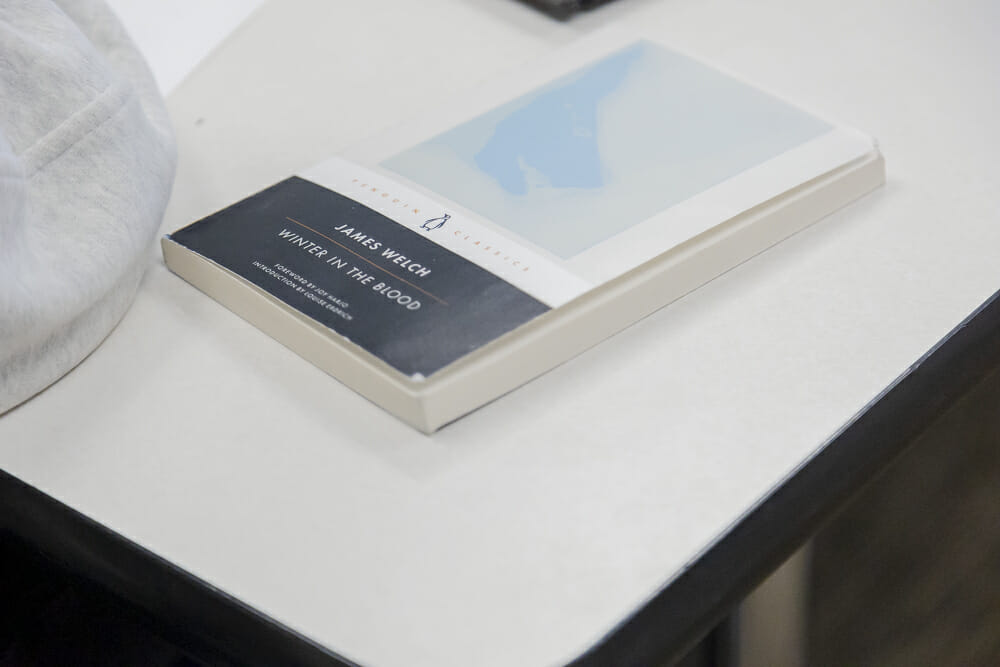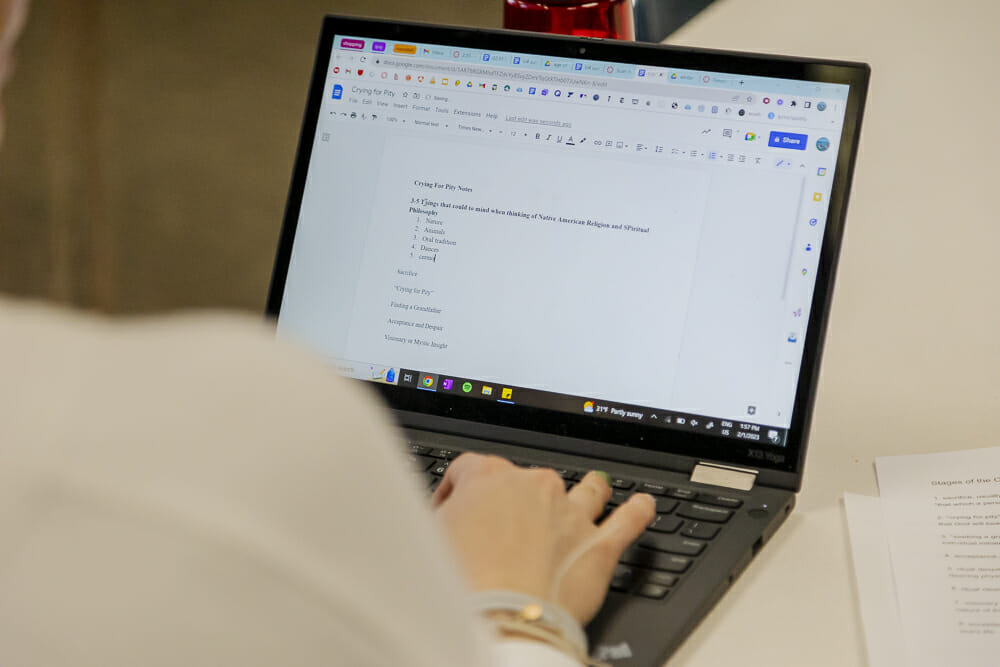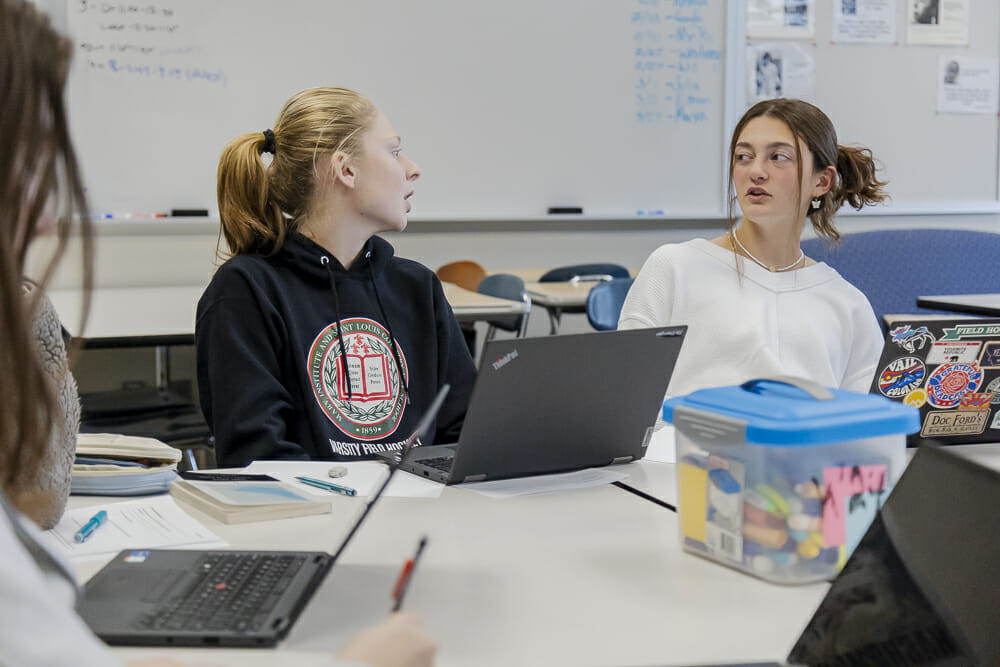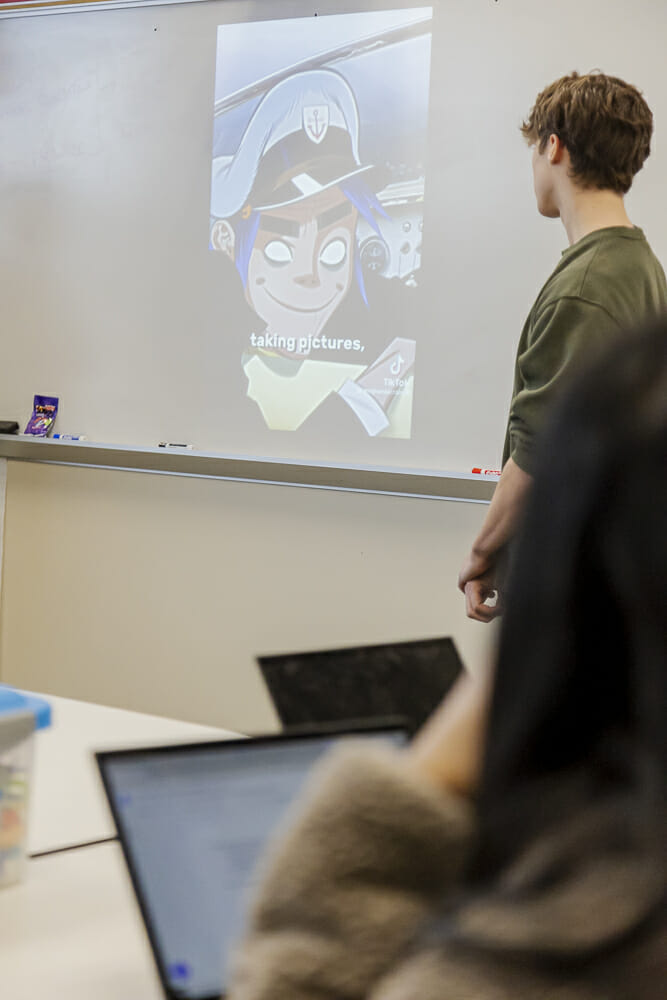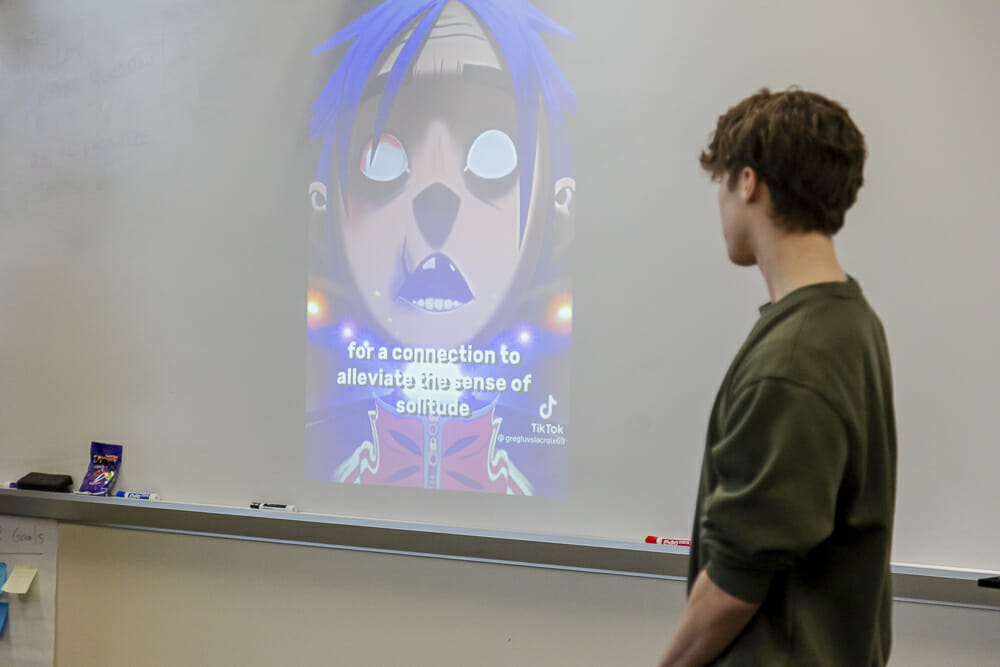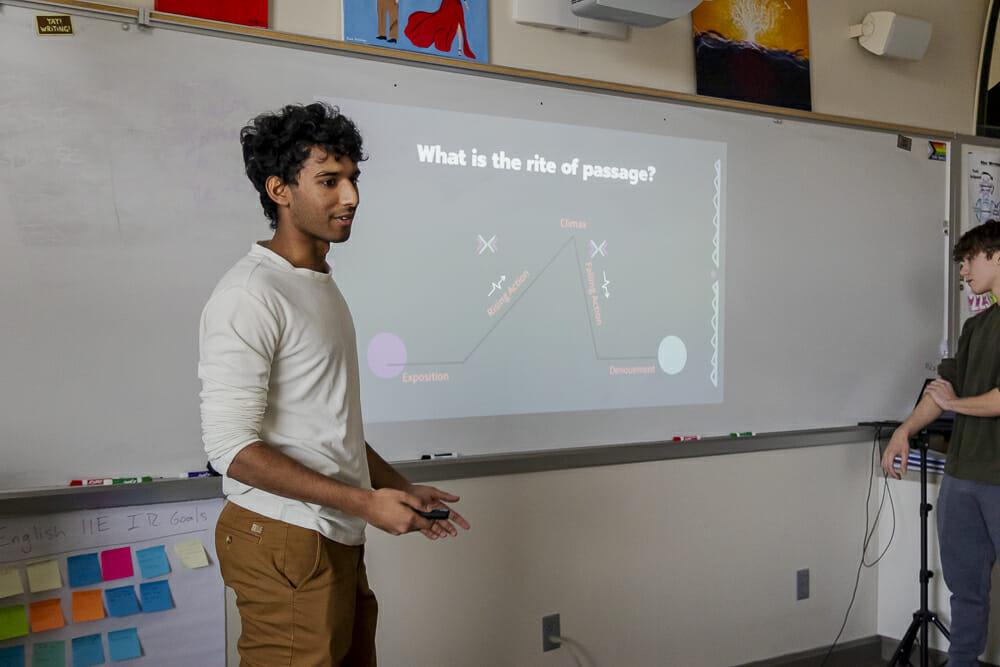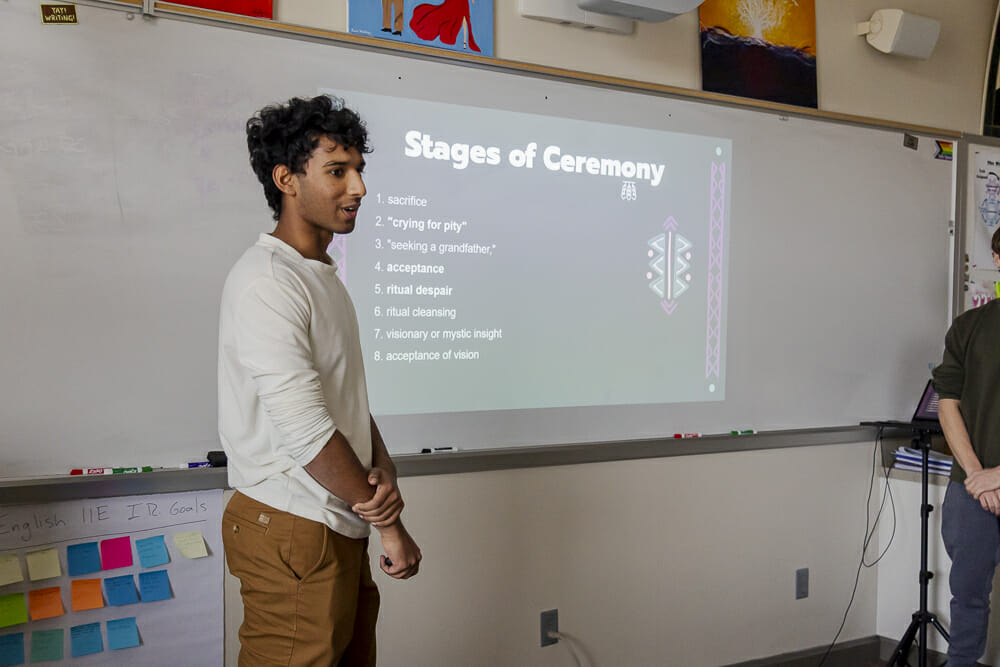For MICDS juniors, this year’s second semester English elective allows students to focus their literary efforts on an American region: Northeast, Northwest, South, and Southwest. The options are designed to engage students in expressing their critical and creative voices using speech, writing, and multi-modal presentations. Beyond immersing themselves in vocabulary and grammar, students create musical compositions and scripts, study film, poetry, and photography from the region, and even record podcasts.
Taught by Upper School English Teachers Tex Tourais, Dan Sadicario, Michelle Rabe, Julia Hansen, Ryan Bueckendorf, and Courtney Check, each approach differs from teacher to teacher. Still, the end goal is the same: to stretch students in their comprehension of the material and presentation skills, enabling them to amplify a deeper understanding of the text for their peers.
For example, in Literature of the Northeast, juniors Mikaela Mikulec ’24, Rachel Phillips ’24, and Fabi Theodoro ’24 ushered the class outside for an opening activity revolving around play and student attitudes towards play in a classroom setting and outside of it. “The goal was to assert that different spaces within societies have different rules and norms for behavior so that ‘acceptable behavior’ is not just determined by the action itself but where, physically, the action is performed. This was a jumping-off point for a 60-minute presentation on Transgression and the Role of Festivals in Judith Ortiz Cofer’s The Line of the Sun,” said Tourais.
Mikulec said they designed the activity as a way to shake things up on a Monday morning. “We wanted to get energy high so our peers would focus on our presentation. We started in the classroom and split into teams where they had to tap soccer balls between them, and the idea was to then move the game outside (under the false pretense that the activity was too chaotic for the classroom), where we changed the rules to demonstrate the idea between accepted and unaccepted chaos, which is something we covered in our presentation. I think the class had fun with the activity and it tied nicely into our themes!” Phillips added, “The game itself wasn’t particularly challenging, except that we changed the rules when we changed locations. Suddenly people were being disqualified and punished for things that had previously been allowed. I think the activity really got the message of the source across and helped our classmates connect with the material in a meaningful but fun way.”
In Literature of the Northwest, students read James Welch’s Winter in the Blood, and the presentations included a volleyball activity where one team member would not talk to draw their peers’ attention to issues of communication and silence. Other presentations included discussions, debates, or freewriting exercises with thoughtful reflection and sharing exercises intended to solidify complex concepts in the minds of their peers. Rishi Tarapareddy ’24 appreciated the opportunity to expand on their presentation. “We tried to make sure that our classmates would actually learn from our lesson, so instead of just presenting, we took steps to make the class involved.”
In developing the presentations, students are encouraged to ask themselves, among other things, how the idea(s) in their criticism reshaped their understanding of what they have already read and what passages they didn’t initially understand but now make sense. It is a deep practice of reading, writing, and critical thinking as a lifelong endeavor.
